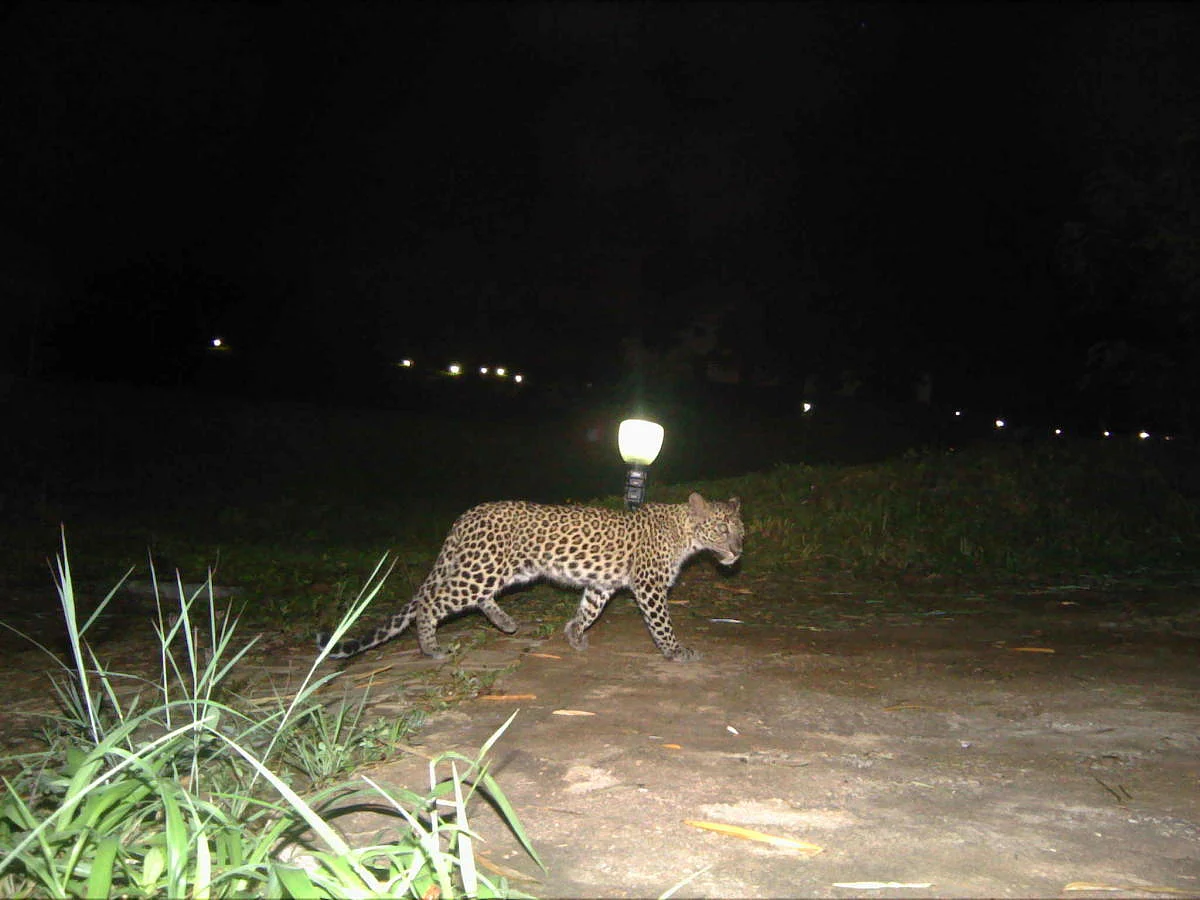
Which wild animal stares at you from newspapers and magazine pages most frequently? Your answer would most likely be the leopard, as incidents of human-animal conflicts involving the spotted cats are now common from the Doon valley in the north to suburbs of Bengaluru in the south, as the feline regularly strays into human habitations.
This, however, was not the situation till about a century ago. Over the last 100-120 years, our country has lost 75 to 90% of the leopard population due to game hunting during the British Raj, habitat fragmentation, loss of prey population and wildlife trade, according to a study published last year. However, despite the decrease in numbers and range, their ubiquitous presence across human habitations generally leads to misconceptions regarding their current numbers.
Leopard census
To get a better idea of their abundance, Indian wildlife researchers while carrying out the 2018 tiger census also estimated the number of leopards in the same landscape. They figured out that India may be home to 12,852 leopards (it is the mean value of a range between 12,172 and 13,535 spotted cats) in the tiger bearing parks with Madhya Pradesh (3,421), Karnataka (1,783) and Maharashtra (1,690) accounting for the maximum numbers.
In 2016, the first Indian leopard census threw up a figure of 7,910 spotted cats in the tiger parks of 13 states (barring the North East). In comparison, the second census reveals more than 62% jump in the leopard population.
Leopards also occupy non-forest areas like coffee and tea plantations, higher elevations in the Himalayas and arid landscapes but such areas were not sampled in the tiger estimation. Also a large portion of the North east was excluded. The 2018 estimate therefore is still a conservative one, which should be considered as the minimum number of leopards that are present in the tiger bearing parks.
“Leopards are extremely adaptable — just like humans and do occur in much of India’s rural landscapes and at the edges of some urban landscapes. Though they have been part of the landscape for a long time, the pace of change (in the landscape) is probably the fastest at the moment. For example, the outskirts of Bengaluru even 10 years ago did not have the kind of human population as it has today. Leopards would have always been present there before the buildings came. Now, with the CCTV’s people know the leopards are there,” ecologist Vidya Athreya from the Wildlife Conservation Society told DH.
In the census, leopard abundance was calculated at four major tiger conservation landscapes: The Shivalik Hills and Gangetic plains, Central India and Eastern Ghats, the Western Ghats, and North Eastern Hills and Brahmaputra Flood Plains.
With an estimated 8,071 leopards, their presence is the maximum in Central India and Eastern Ghats followed by the Western Ghats (3,387), Shivalik hills and Gangetic plains (1,253) and North East Hills and Brahmaputra Flood Plains (141). Both in the forests of central India and the Western Ghats, the felines are seen in a few distinct pockets.
“Though the human density is less, in the forests of the north east, people have traditionally hunted a lot of wildlife for sustenance. It is also a hillier landscape without high density of domestic animals like mainland parts of India. These could be the reasons for fewer density of leopards in north east India,” said Athreya, who researches leopards.
Genetic link
Across landscapes, the gene flow is evident. For example, the Terai leopard shares their gene pool with the central Indian population; the species in the Eastern Ghats mingles with West Bengal cats and central India population with the species roaming in Western Ghats.
What is also common is a general negative response that leopards generate in large parts of the country. This is because their interactions with humans often results in injury and killing of domestic animals. Despite their widespread distribution, leopard habitats are being increasingly fragmented, and such small fragmented areas with low wild prey densities can't harbour a sizable population of leopards. This has resulted in leopards venturing out into human-dominated landscapes and ending up in conflicts.
“The density of livestock and domestic animals that people rear can never be compared to the density of wild prey inside the forest. India has one of the highest densities of livestock in the world which outnumbers that of wild prey. So leopards and other carnivores do have abundant food resources in human use landscapes such as dogs and goats,” Athreya said.
In the census report, scientists from the Wildlife Institute of India argue that leopards can also be considered as an umbrella species — much like the tiger — at least in the areas devoid of any large carnivore. Athreya thinks otherwise.
“The issues facing the two species are different. The tiger’s most important threat was their decline in numbers. In the case of leopards, the most important issue is the damage they cause to livestock and in rare instances to people's lives. The focus thus has to be on making the shared spaces safer for people and leopards. We cannot copy paste what we do with one species onto another when the most important issues they are facing are very different,” she noted.


